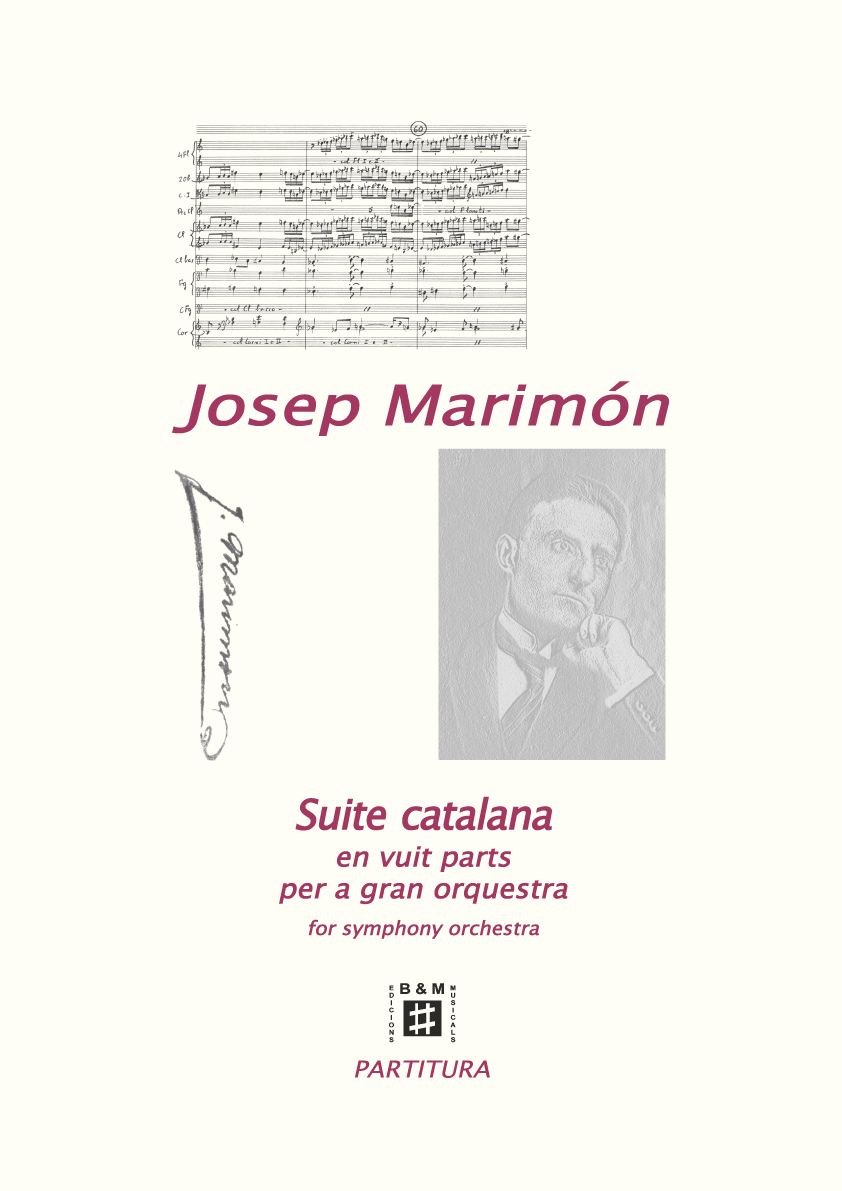Description
Author
Format
Instrumentation
Duration
Pages
Year of composition
ISMN
Ref.
We find a work that is strongly inspired by Catalan folklore and treated, in turn, with the instrumentation and inspiration of the most successful composers of the 20th century.
The first movement, “Dansa”, evokes a gathering of villagers in a meadow around the town to dance and enjoy a sunny day. In its instrumentation, the presence of the tible and two tenoras stands out, who will have a leading role in the solo that they will perform starting at measure 146. Other instruments worth highlighting are the bass clarinet and the contrabassoon, which are not usually part of a conventional orchestral template. A piccolo and its response in the strings and other instruments evokes dance several times, of a joyful and pastoral type, until in measure 55, with the change of measure and the indication of dramatic, it perhaps seems as if the author were describing a summer storm, with a tense presence of horns and other metals, where the author will once again present us with a pastoral theme, this time different and lighter.
The second movement, “Introduction”, is, as its name suggests, a brief bridge to the third movement. This second movement begins with a characteristic rhythmic figure of the winds that will give prominence to the growing importance of the brass and its growing dynamics, which will culminate in a trill in the last measure that will serve to link with the third movement.
This one is titled “Prelude” and recovers the theme in characteristic sextuplets of the second movement, on this occasion by the flutes and supported by the brass, until from measure 25 onwards the entire string section accompanies the motif and gives the necessary push, along with the expression accelerando to finish the movement with two last measures with the indication ritardando molto.
A fugue is the structure of the fourth movement. The melody runs through all the strings until measure 55, where it receives the support of the brass, and from measure 67 the entire orchestra intervenes until it falls silent so that a violin solo in measure 78 gives way to the final tutti that will close the movement.
The “Scherzo” of the fifth movement is probably the richest in instrumentation and complex in structure. A short introduction based on the rhythmic models of the second movement gives rise to a highly rhythmic and burlesque theme, in 3/8 time. This theme will develop until changing at measure 71 to a ¾ time signature with great rhythmic intensity, which will be followed by the horns. From measure 80 the music will become soft with the sweet timbres of the woods. In measure 100 the theme will be hinted at again, on piano and with the pizzicatti of the strings, until a climax is reached again in measure 143. In measure 150 the oboes will have the responsibility of presenting the theme again, until reaching measure 173, where the theme from the first exposition will appear again this time with all the instruments. From measure 188 the theme will increase in volume and timbre until in measure 230 there is a new and final exposition of the theme. The last measures will once again incorporate the ¾ time signature, and the last moments of the piece will pass at full speed to take us to the sixth movement.
The sixth movement is titled “Improvisation” and presents a soft and sweet theme until measure 10. Then the drama increases with the presence of the horns and other brass, but the theme will sweeten again, particularly from measure 25 onwards, with longer notes that will give it a more restful air. Between bars 41 and 47, there will be a repetition of agile notes and in bar 48 a sudden silence, which will lead us to an ending reminiscent of the symphonic music of Gustav Mahler.
A “Cant d’amor” is the penultimate movement of the Suite. The instrumentation varies and a harp is added, as well as a solo violin and, at certain moments of the piece, eight violins from the string section will play as if they were soloists in a very rich harmonically speaking unfolding. The piece begins with a strong chime of trumpets, which gives rise to a presence of the strings and wind instruments in response to this initial impulse. The music becomes softer, with impressionistic touches reminiscent of Debussy, and the flutes, harp and solo violin play in 12/8 time while the rest of the instruments play in 4/4 time. From measure 68 onwards the orchestration is much fuller, and a few measures before finishing there is again the doubling of the eight violin soloists that gives a warmth and softness to this section of the work that is reminiscent of the harmonic clusters of pieces more modern. The work ends with a violin solo and a melody on the harp.
The last movement is a sardana, where the author reintroduces the tible and two tenoras into the instrumentation. He begins the piece with the brass and the presence of percussion, which gives the air of this typical Catalan dance. From measure 41 a few chromatic tensions occur, and it is from measure 101 that the entire orchestra accompanies the dance. The theme is repeated and concludes in a very rhythmic way.





















There are no reviews yet.